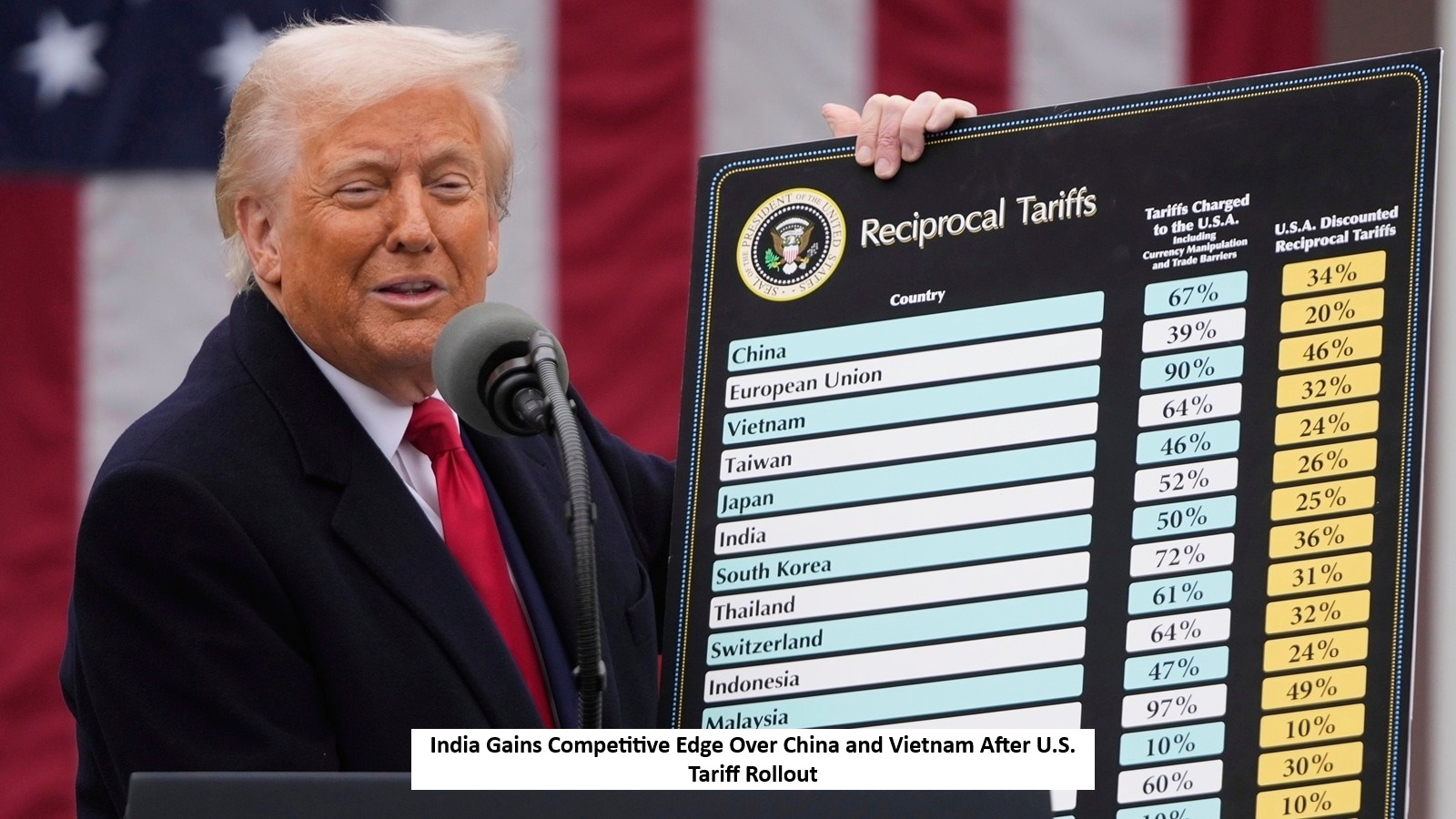
India's electronics manufacturing sector stands to benefit from newly announced reciprocal tariffs by the United States, according to Dixon Technologies Managing Director Atul Lall. The company foresees a strong export performance, particularly with its key partner Motorola, amid reduced tariff exposure compared to competing countries.
Tariff Details and Market Impact
Recently, the U.S. implemented new import duties under a reciprocal trade initiative:
India: 26%
China: 34%
Vietnam: 46%
Thailand: 36%
Indonesia: 32%
In contrast, China faces a combined tariff burden as high as 54-79%, and Vietnam up to 46%, making Indian exports relatively more competitive.
Dixon Projects Rs 5,000 Crore in U.S. Exports for FY25
Dixon Technologies, a key participant in the Production-Linked Incentive (PLI) scheme, expects to export smartphones worth Rs 1,700–1,800 crore to the U.S. this fiscal, primarily for Motorola. Total export revenue from the U.S. is projected to reach Rs 4,500–5,000 crore, representing a growth higher than the 35% achieved last year.
Lall emphasized ongoing strategic discussions with Motorola to navigate the changing trade dynamics and highlighted the importance of improving component-level value addition to reduce costs.
ICEA Comments on India’s Trade Position
According to India Cellular and Electronics Association (ICEA), India has emerged favorably in the first round of U.S. tariff adjustments, particularly in comparison to major export rivals.
While a few countries like Brazil and Egypt have slightly better tariff terms, India now holds a strong near-term advantage in the electronics export space.
ICEA Chairman Pankaj Mohindroo added, “The long-term shift in India’s electronics trade with the U.S. depends on concluding a Bilateral Trade Agreement (BTA).”
Read More: Samsung is bringing its thinnest flip phone, with a larger battery than before, details revealed

 Share
Share



